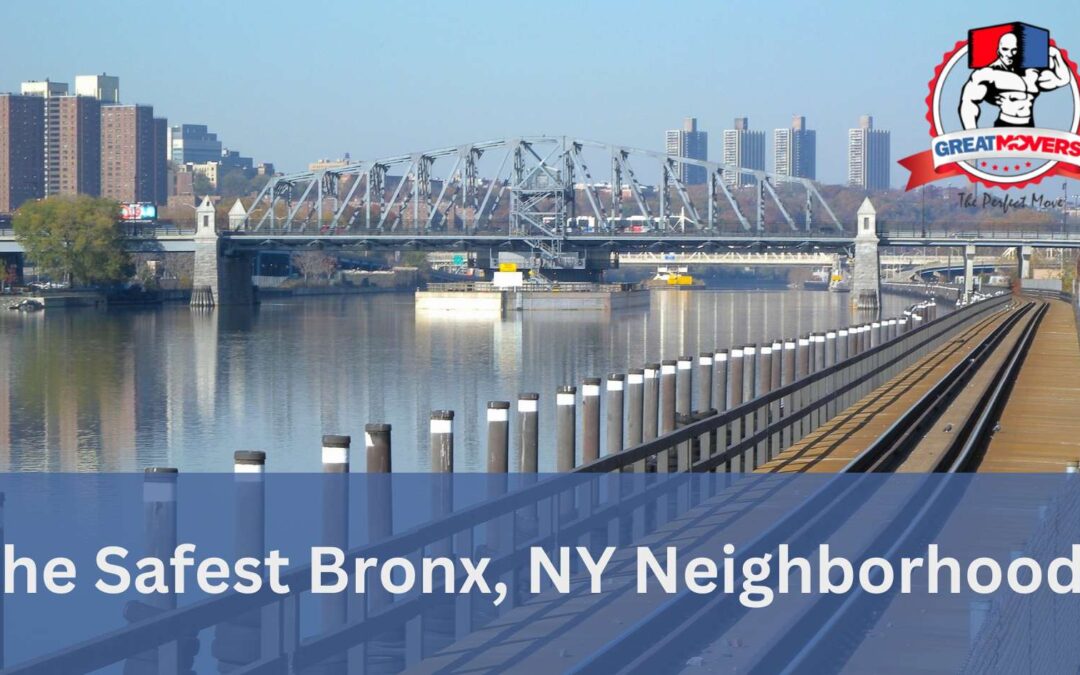Thinking about relocating to Long Island, NY? You’re not the only one! Every year thousands of people move to Long Island to enjoy the nature, arts, and entertainment within its four counties. You can experience beautiful beaches, charming villages, hiking trails, and bustling towns all within an hour’s drive.
If you’re thinking about moving to Long Island, New York there are a few things you should know before you take the plunge. As diverse as the neighborhoods are in Long Island, finding movers in Long Island can be a bit more difficult than finding one in New York City as there aren’t as many options. Of course, you should first decide whether you want to actually live on Long Island or not before you start looking for movers or houses for that matter. While Long Island can be a great place to live, it also has downsides.
The Weather
You might be asking yourself, where is Long Island? It lies in the transition zone between a humid subtropical and humid continental climate. That means that summers tend to be hot and humid with the occasional thunderstorms, spring and fall are mild, and winters are cod with a mix of snow and rain. As it is situated on the Atlantic Ocean, areas along the coast, such as South Shore, benefit from the cooling ocean breezes and tend to be significantly cooler than the rest of Long Island. It also tends to have milder winters than the rest of New York due to its coastal location.
While most storms major storms peter out thanks to the moderating effects of the Atlantic Ocean, it still is vulnerable to tropical cyclones. In fact, it has been affected by several tropical cyclones, most recently Hurricane Sandy, which caused extensive damage to low lying areas. Flooding is also an issue in many of the coastal and low-lying areas of Long Island. Of course, these are rare occurrences and for the most part, Long Island offers excellent weather for people who enjoy all four seasons. During the summer you can relax and enjoy the beaches while in the winter you can enjoy cross country skiing thanks to the moderate amount of snowfall the area gets in the winter. Of course in the fall and spring, you get to enjoy the amazing bursts of colors from the leaves and flowers.
Transportation
Pretty much every type of transportation serves Long Island due to its close proximity to New York City. You can easily commute from Long Island to New York City via the Long Island Rail Road, and millions of people do every year. The LIRR is the second busiest commuter railroad in North America beaten out only by the Metro-North railroad. Since it’s so busy you do have to deal with crowded trains, especially during peak hours.
If you want to travel to more locations within Long Island, you can take one of three bus lines: the Nassau inter-country express that provides transportation throughout Nassau County and some areas of Suffolk County, the Suffolk County Transit that provides transportation throughout Suffolk County, and the Huntington Area Rapid Transit that serves the Town of Huntington.
Long Island, NY is the location of three large airports – JFK Airport, LaGuardia Airport, and Long Island MacArthur Airport. That’s right, Queens is, in fact, part of Long Island. JFK is a major international airport servicing around 75 million passengers a year while LaGuardia averaged around 20 million. The smaller Long Island MacArthur Airport handles about 2 million passengers a year and is the only airport in Nassau or Suffolk County with regularly scheduled commercial flights. There are smaller general aviation airports on Long Island, but they do not have the same amount of passengers or scheduled flights as the other three.
If you want to go adventuring on the high seas, you can hop onto the various ferries dotted around the island that connects Long Island and Connecticut. Depending on what ferry you take, you might even be able to ride on with your car. There are also seasonal ferries that take you to the popular beach destination Fire Island as well as Block Island and Montauk.
If all else fails, you can always take your car and drive around the island as there are multiple expressways and parkways that will take you anywhere you want to go. While it might not be the fastest – Long Islanders call the Long Island Expressway the world’s longest parking lot – it does get you from point A to point B if there’s no other mode of transportation.
Long Island Taxes
One of the biggest things you should consider before you even look at movers in Long Island is whether you can afford to pay the taxes. While Long Island in general has high property taxes Nassau county has some of the highest property taxes in the country due to its good schools and proximity to New York City and the beaches.
Property taxes aren’t the only thing you have to worry about in Long Island. You also need to contend with the relatively high New York State income tax as well as the standard federal taxes. If you live in Long Island, but work in New York City you might also be subjected to the New York City income tax as well. However, if you live and work on Long Island you do not have to pay a county tax. While you might not have to pay a county income tax, you will have to pay a 4.5% percent sales tax – the highest percentage in New York State – in addition to the 4% state tax if you make purchases in Nassau and Suffolk counties.
Overall, Long Island tends to have pretty high taxes in comparison to other areas in the state and even country. With that said, the area with the highest taxes also tends to have many amenities that you might want around you such as museums, parks, great schools, etc. If those are important to you, then regardless of where you move you will end up paying a bit more in taxes.
Education
The public school system in Long Island has gained a reputation for excellence, making it an attractive choice for families considering a move to the area. Long Island is home to several highly regarded school districts that consistently rank among the top in the state. These districts are known for their rigorous academic programs, dedicated teachers, and access to various extracurricular activities. The schools in Long Island often offer a wide range of advanced placement (AP) courses, honors programs, and specialized programs in areas such as STEM, arts, and languages. With a strong emphasis on education and a commitment to providing students with a well-rounded experience, the public school system in Long Island has proven to be a good place for families seeking quality education opportunities for their children.
In addition to the academic offerings, the public school system in Long Island places a strong emphasis on creating a safe and supportive learning environment. Many of the schools have implemented anti-bullying initiatives and proactive measures to ensure the well-being of their students. Long Island school districts often have comprehensive support services, including counselors, social workers, and special education programs to address the diverse needs of students. The involvement of parents and the community in the education system is also encouraged, fostering a sense of belonging and shared responsibility for student success.
In addition to the K-12 educational system, Long Island is also home to several colleges such as Stony Brook University, Hofstra University, New York Institute of Technology, and Adelphi University among many others. Families with young children can technically have their child stay on Long Island for their entire educational career if they choose. Of course, if the Long Island colleges don’t cut it, there top-ranked universities in New York City including Pratt Institute, Fashion Institute of Technology, New York University, and Fordham University.
Cost of Living
The cost of living in Long Island, NY, is generally higher than the national average. Housing expenses tend to be the most significant factor contributing to the higher cost of living. The median home price on Long Island is around $500,000, making it a relatively expensive housing market. Renting an apartment is also quite costly, with median prices of around $1,750 for a one-bedroom and $2,500 for a two-bedroom unit. These prices can vary depending on the specific location and amenities offered.
In addition to housing, other aspects of the cost of living on Long Island can also be higher compared to other areas. Taxes, particularly property taxes, are among the highest in the country, especially in Nassau County. This is partly due to the region’s good schools and proximity to New York City and the beaches. Other expenses, such as transportation, healthcare, and food, also tend to be on the higher side compared to national averages.
It’s important to note that the higher cost of living on Long Island is often offset by the amenities and quality of life the area offers. The region boasts excellent schools, numerous parks and recreational facilities, cultural attractions, and a vibrant social scene. The proximity to New York City and its employment opportunities is also a significant advantage. However, it’s essential to carefully consider your budget and financial situation before making a decision to move to Long Island, as the higher cost of living can significantly impact your overall expenses and lifestyle.
Job Market
Although it might not have as many jobs as New York City, the Long Island job market has grown steadily over the years. Some sectors such as manufacturing, which have been losing jobs nationally, have actually seen growth on Long Island due to the retirement of baby boomers and the decreasing amount of skilled workers who are willing to work in manufacturing.
Small businesses are the lifeblood of Long Island. Companies with under 20 employees account for 90 percent of Long Island’s companies with child-care, banks, law firms, doctors’ offices, etc. all play a key role in the local economy. Of course, small delis and clothing stores also help employ workers, and these also dot the local economy, though they don’t necessarily pay well. There’s also a growing demand for construction workers due to the increase in multifamily residential and mixed-use development near the Long Island Rail Road stations.
While Long Island’s job growth is strong, unfortunately, top-paying jobs are decreasing. The fastest-growing sectors include health care, which pays an average of $58,676, and hospitality, which averages $23,894. Jobs in finance, operations managers, etc. all had their job market decrease or stagnate year-over-year. Considering the cost of living in Long Island is so high, it’s no surprise that most people who live on Long Island commute to New York City for more lucrative opportunities.
Entertainment
Long Island, NY, offers a wide range of entertainment options for residents and visitors alike. Whether you’re interested in cultural events, outdoor activities, or nightlife, there’s something for everyone. The region is home to numerous theaters, concert venues, and art galleries, providing ample opportunities to indulge in the arts. The Tilles Center for the Performing Arts in Brookville hosts a variety of performances, including Broadway shows, classical music concerts, and dance performances. The Paramount in Huntington is a popular music venue that attracts renowned artists from various genres. Additionally, the Nassau Veterans Memorial Coliseum in Uniondale is a multi-purpose arena that hosts concerts, sporting events, and live shows.
Nature lovers can explore the beautiful landscapes and outdoor recreational areas on Long Island. With over 200 miles of coastline, the island is dotted with picturesque beaches, perfect for sunbathing, swimming, and water sports. Popular beach destinations include Jones Beach State Park, Robert Moses State Park, and Fire Island National Seashore. If you prefer a more active outdoor experience, you can explore the numerous hiking trails in state parks such as Bethpage State Park and Caumsett State Historic Park Preserve. Long Island is also known for its vineyards and wineries, offering wine tastings, tours, and events throughout the year. The North Fork region, in particular, is renowned for its wineries and charming countryside atmosphere.
In addition to the arts and outdoor activities, Long Island boasts a vibrant nightlife scene. The island is home to a wide range of bars, clubs, and restaurants where you can enjoy live music, dance, and socialize. The downtown areas of cities like Huntington, Patchogue, and Port Jefferson are known for their lively atmosphere and diverse dining options. The brewery and craft beer scene on Long Island has also gained popularity, with numerous breweries and taprooms offering unique and locally brewed beers. Whether you’re looking for a relaxed evening at a wine bar or a night of dancing at a lively club, Long Island has plenty of options to cater to different tastes and preferences.
Neighborhoods
If you’re interested in the best long island neighborhoods, you’ll first have to decide what’s important to you. Aspects that might require you attention when looking for the best places to live on Long Island include, but are not limited to:
- Access to the LIRR
- Public schools access and rating
- Cost of living
- Amenities
- Access to and quality of parks
- Job opportunities
- Presence of young families
Even if you limit your search to just Nassau and Suffolk county, that covers almost 200 locations. That’s why it’s so important to list out what features of a town are non-negotiable. Still, if you’re looking for the all-around best places to live in Long Island, you can’t go wrong with the following:
- Greenport – this village is consistently ranked as the safest region on Long Island. It boasts several restaurants and boutique shops and is home to some of the best vineyards Long Island, NY has to offer. You also have easy access to the LIRR and the Long Island Expressway.
- Smithtown – ranked as one of the best places to live on Long Island, Smithtown has it all including plenty of nearby shopping centers, a great school district, affordable home prices, and close proximity to the LIRR.
- Bellmore – if you want beach views then Bellmore is a great option. It has excellent schools, a great downtown area, and is one of the best neighborhoods to live in Long Island and commute to NYC.
If you’re looking for some of the best neighborhoods, Long Island has plenty of options to choose from if you want something that offers safety, good schools, and close proximity to NYC.
Moving to Long Island
As with any place you move, Long Island has its pros and cons. If you want to have a bit more space than a cramped 200 square foot apartment in New York City, but don’t want to be too far away from everything it has to offer, then it might be a great choice. Plus, Long Island has plenty of its own amenities with the added bonus of beautiful beaches, hiking trails, and generally mild weather throughout the year.
Of course, it’s not without its downsides. You’ll have to deal with incredibly high property and sales taxes. The cost of living is also higher than in New York City itself. Plus, while the weather tends to be mild, there is the possibility of it getting hit by severe weather such as tropical storms, blizzards, and flooding. Then, of course, there’s the traffic and commute. If you work in the city, like the thousands of others, you’ll have to deal with crowded trains, horrible road traffic, and more.
If Long Island sounds like the perfect place for you, try to find local Long Island movers to help you into your new home. They’ll know the area and have experience with your specific type of move whether you’re moving from New York City or New Jersey.






